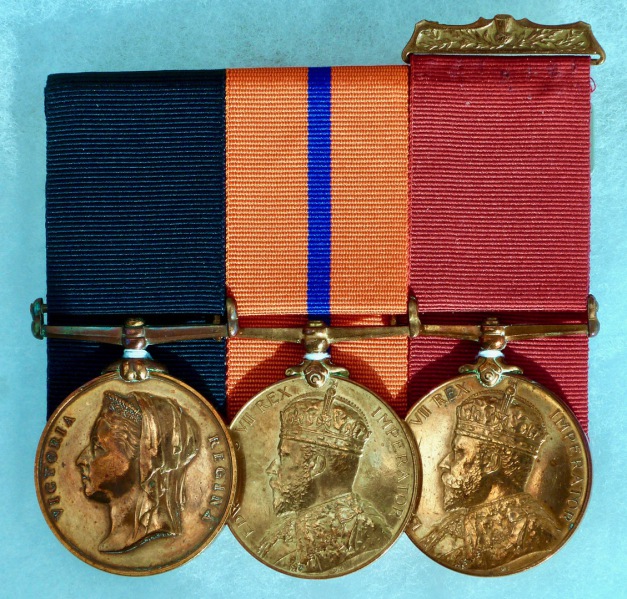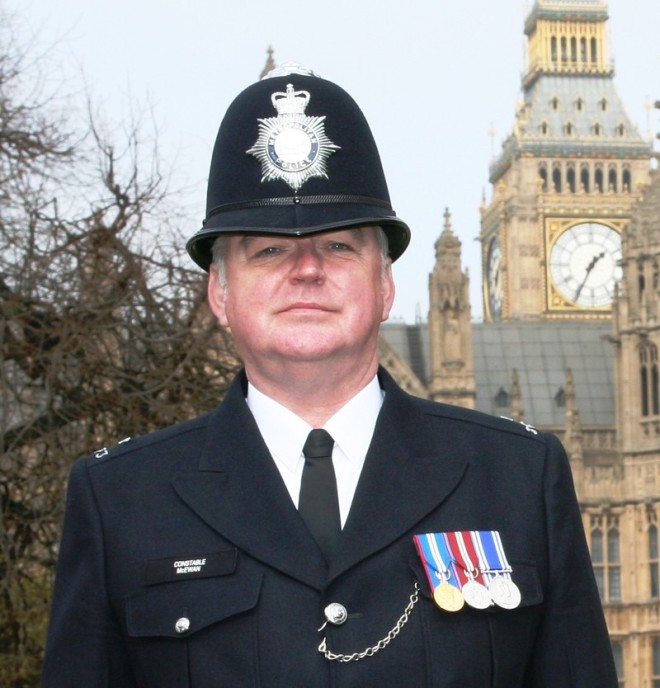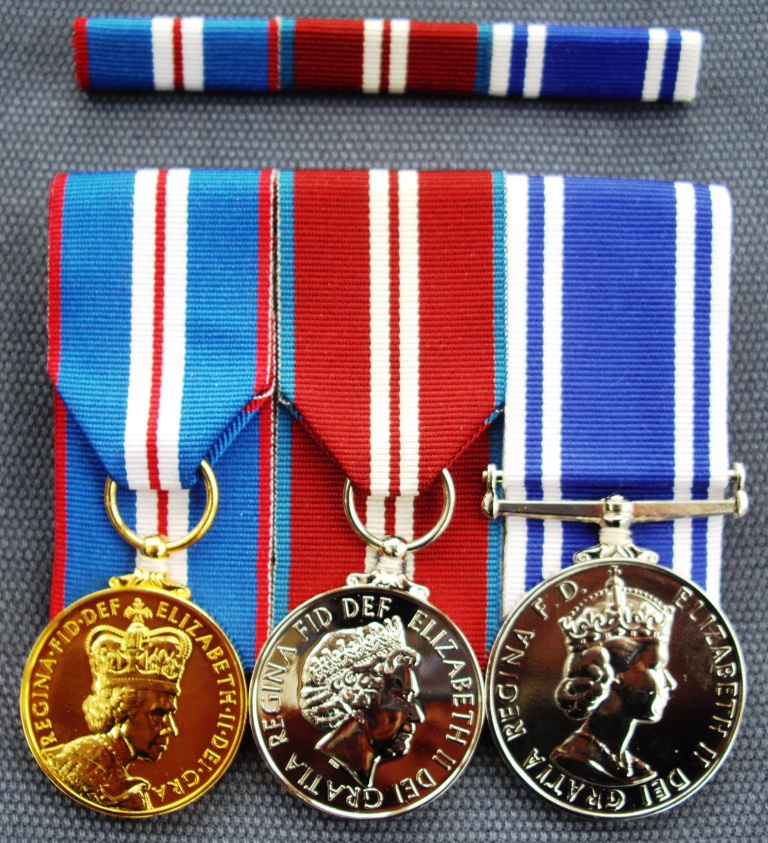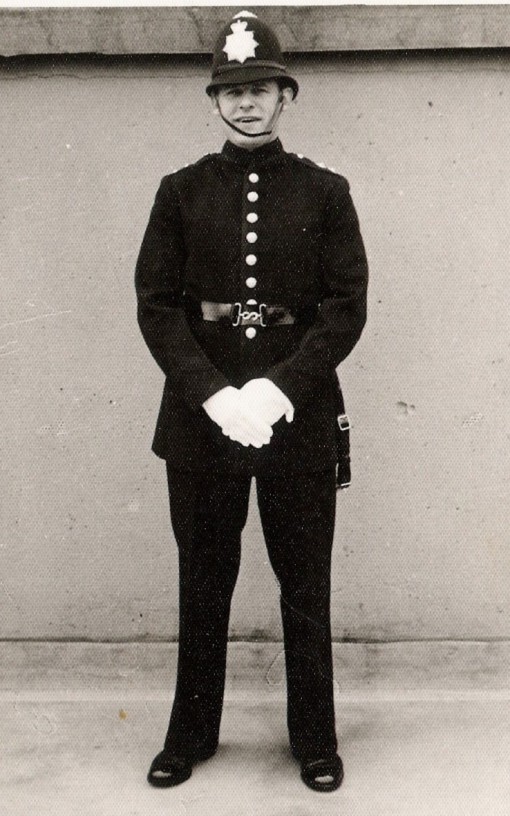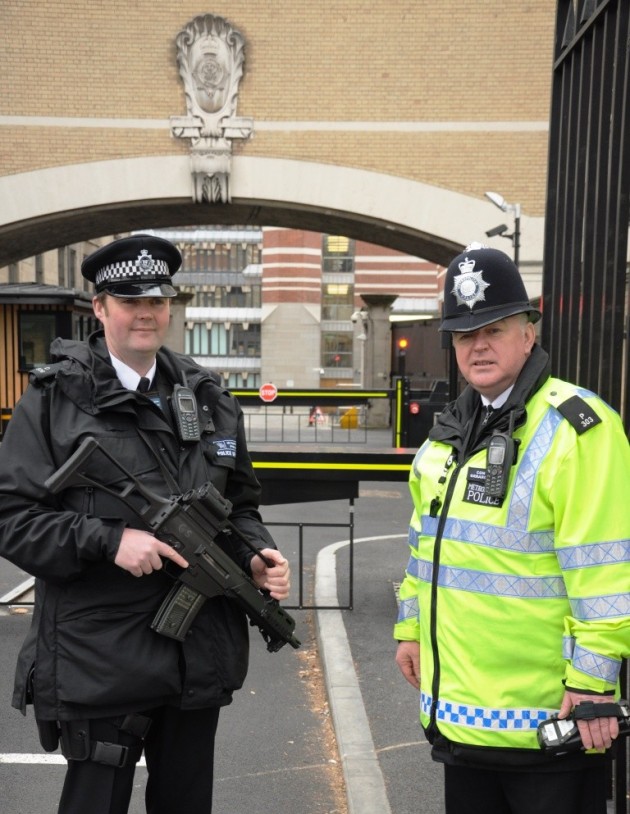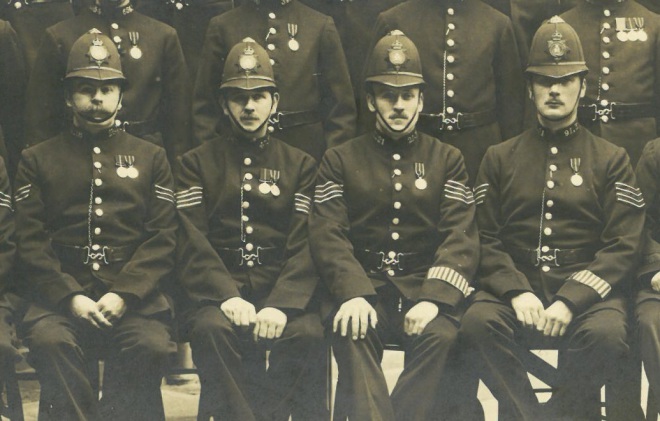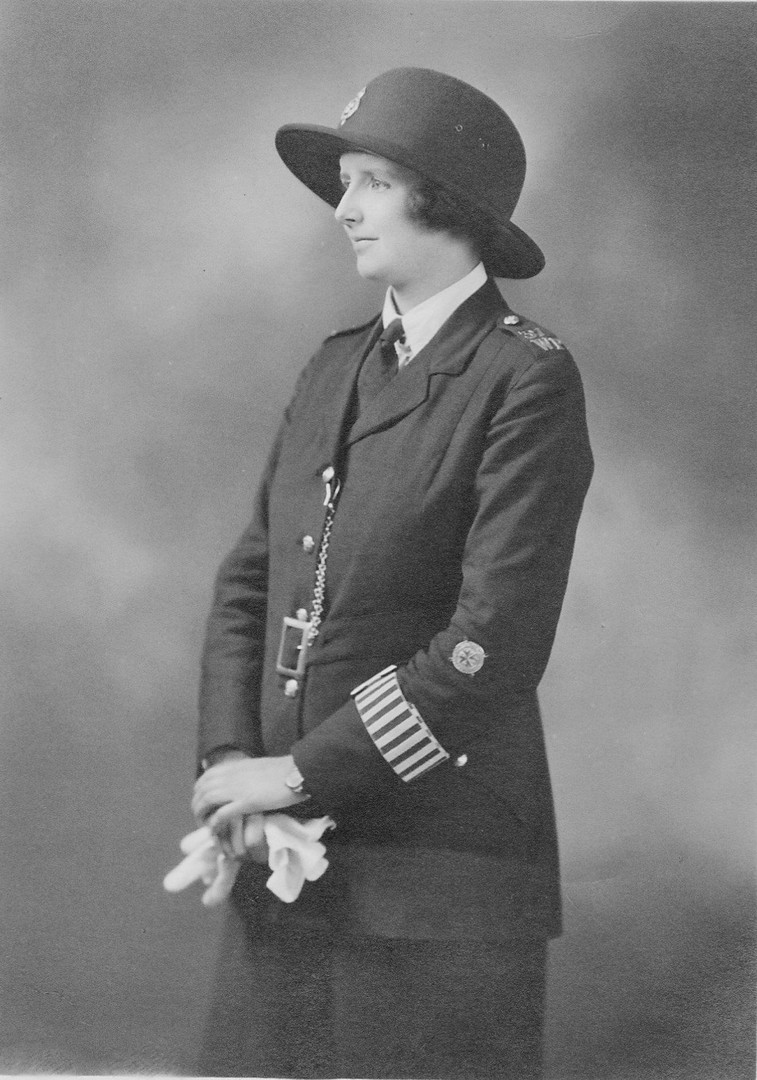
The Metropolitan Police
Detective Sergeant David Liddle - Special Branch
Metropolitan Police
Queen Victoria Diamond Jubilee (Metropolitan Police) Medal, 1897
King Edward VII Coronation (Metropolitan Police) Medal, 1902
King Edward VII Police (Scotland) Medal, 1903 (Visit to Scotland Medal)
Detective Sergeant David Liddle
Biography
David Liddle was born on 29 August, 1862 in Newtongrange, Midlothian, the son of Thomas Liddle, a Coal Miner and Janet Burnside or Liddle.[i]
He continued living in Newtongrange, and after leaving school, rather than follow his father and brother into the coal mines, became a ‘Pupil (Student) Teacher’, possibly in the Newtongrange Colliery School opened in 1849.[ii] This was his occupation in the Census of Scotland, 1881.[iii]
So far, I have no information what he did between 1881 and early 1888 but what he did after that is clear.
Metropolitan Police Orders, Monday, 9 July, 1888 (MEPO 7/50)
In July, 1888, David Liddle joined the Metropolitan Police as PC 336 F in Paddington Division, Warrant Number, 73781.[iv]
Metropolitan Police Orders, Friday, 30 March, 1894 (MEPO 7/56)
The orders record that on this date, 73781, by now, PC 163 F David Liddle was transferred to the Criminal Investigation Department (CID).[v]
Kensington & Chelsea Electoral Register, 1894, No. 4 Ladbroke Polling District
PC Liddle was living in the Section House at the Police Station in 69 Ladbroke Road when he was awarded the Queen Victoria Jubilee medal in 1897.[vi]
Kensington & Chelsea Electoral Register, 1897, No. 3 Pembridge Polling District
PC Liddle was still living in the Section House at the Police Station in 69 Ladbroke Road when the Electoral Register that year was compiled. [vii]
Metropolitan Police Orders, Monday, 14 February, 1898 (MEPO 7/60)
The orders record that on this date, 73781, PC 163 F David Liddle was promoted to Police Sergeant (CID) and transferred to the Criminal Investigation Department (CID) at E (Holborn) Division.[viii]
Old Bailey Deception & Fraud Trial, Tuesday 4 February, 1901
On this date, DS David Liddle, E Division (Holborn), gave evidence at the Old Bailey in the trial of George Herbert Francis and Robert George Porteous on charges of Deception and Fraud.[ix]
Census of England, 1901
On the date of the Census, David Liddle was living at 15 Liverpool Street in the Parish of St Pancras in the Borough of Holborn, London. [x]
|
Name & Age |
Occupation |
Place & County of Birth |
|
David Liddle, (38) |
Metropolitan Police Officer |
Scotland |
He was still stationed at Holborn (E) Division as a DS. An entry on the Old Bailey website records him giving evidence in a Deception and Fraud trial there in February that year and his Division is recorded in the transcript as ‘E’.
Metropolitan Police Orders, Saturday, 10 August, 1901 (MEPO 7/63)
The orders record that on this date, 73781, PS (CID) David Liddle was transferred to the Criminal Investigation Department (CID) as PS (2) at Commissioner’s Office, CID A1 (Branch).[xi]
Marriage to Catherine Hogg Fraser, 1901
DS David Liddle was still living at 15 Liverpool Street in the St Pancras Parish of London in June when he married Catherine Hogg Fraser then working as a General Servant in Hampstead but originally from Cranston in Midlothian, a few miles from Newtongrange. [xii]
Catherine Fraser had been working in London since at least 1891 but it is possible they knew each other from Midlothian.
The Commissioner’s Office (CO)
Having transferred to the Commissioner’s Office (CO) Division at Scotland Yard, it was while here he was awarded the EVIIR Coronation Medal in 1903 as a Police Sergeant (PS), in CO in the Criminal Investigation Department (CID) A1 Branch, (Special Branch).
Old Bailey Deception & Fraud Trial, Monday 21 July, 1902
On this date, DS David Liddle, CO (Scotland Yard), gave evidence at the Old Bailey in the trial of Joseph Easton Stanley, George Mills, Samuel Beards and Charles Simons, on charges of Deception and Fraud.[xiii]
Birth of Margaret Jessie Liddle, London, 1902
In 1902, the couple’s first child, Margaret Jessie Liddle was born in London.[xiv]
King Edward VII Visit to Scotland, 11 – 16 May, 1903
Between 11 – 16 May, the following year he was probably on duty with Special Branch at the Royal Visit to Scotland of King Edward VII and Queen Alexandra.
The King and Queen travelled north by train on Monday 12 May, 1903. During that visit, DS Liddle would have been on duty at Royal Events in Edinburgh, Glasgow and at Dalkeith Palace (then home of the Duke and Duchess of Buccluech) where the Royal couple were staying.
The Royal party held a Levee at the Palace of Holyrood House and entertained various guests at Dalkeith Palace. As a Protection Officer, it is highly likely he attended most of the Royal engagements in Scotland.
The King and Queen departed Dalkeith railway station heading south on Friday 16 May, 1903.
Award of the King Edward VII Police (Scotland) Medal, 1903 (Presented in 1904)
According The Police Review and Parade Gossip of Friday, 4 March, 1904, Page 118, he was one of only two Metropolitan Police (and eight other officers from English forces) to be awarded the King Edward VII Police (Scotland) Medal, 1903 (now better known as the ‘Visit to Scotland’ medal) as a ‘Detective Sergeant’ (DS).[xv]
The other officers awarded the Scottish Police medal were from the forces listed below:[xvi]
|
Police Force |
Remarks
|
|
Metropolitan Police |
Two Detective Officers (one of whom was DS David Liddle), performing Special Duty in connection with the King’s Visit.
The medals were forwarded to their respective Chief Constables for presentation.
|
|
Manchester City Police |
Two Detective Officers performing Special Duty in connection with the King’s Visit.
The medals were forwarded to their respective Chief Constables for presentation.
|
|
Liverpool City Police |
Two Detective Officers performing Special Duty in connection with the King’s Visit.
The medals were forwarded to their respective Chief Constables for presentation.
|
|
Leeds City Police |
Two Detective Officers performing Special Duty in connection with the King’s Visit.
The medals were forwarded to their respective Chief Constables for presentation.
|
|
Newcastle-upon-Tyne City Police |
Two Detective Officers performing Special Duty in connection with the King’s Visit.
The medals were forwarded to their respective Chief Constables for presentation.
One of the officers was Detective Sergeant Henry Winterburn who joined the force in 1891 and served until 1924 when he retired as an Inspector.
|
Metropolitan Police Orders, Thursday, 29 October, 1903 (MEPO 7/65)
The orders record that on this date, 73781, PS (2) at Commissioner’s Office, CID A1 Branch, transferred to Y (Highgate) Division as PS (1) CID. Later sources, records of the Old Bailey and local newspapers, indicate that he was stationed at Kentish Town Police Station. [xvii]
It is possible that he was transferred on health grounds or unfitness for Special Branch Duties.
Birth of Catherine Fraser Liddle, London, 1904
The couple’s second child, Catherine Fraser Liddle was born in London in 1904.[xviii]
The Mercury, Observer and Times, Friday 15 April, 1904
A report on Page 2 of this North London newspaper gave a detailed report on a case heard by a Magistrates Bench consisting of “Sir Francis Cory-Wright, the Rev. F. Hennessy, and the Mayor of Hornsey, Alderman F. W. Lawson” on Monday, 11 April, 1904.
The case involved a 16 year old Servant from Tyndall House Highgate charged with Theft and a Pawnbroker, Henry John Kimball of Hornsey Road charged with ‘Receiving the stolen goods well knowing them to be stolen’.
DS Liddle gave evidence in this unusual case and both accused were found guilty.[xix]
Old Bailey Theft Trial, Monday 24 July, 1905
On this date, DS David Liddle, Y Division (Highgate) gave evidence at the Old Bailey in the trial of Walter Wood and Alfred Soames on charges of Theft.[xx]
Metropolitan Police Orders, Monday, 19 March, 1906 (MEPO 7/68)
According to page 247, of the Metropolitan Police Orders of Monday 19 March, 1906, PS (CID) David Liddle had died and pay was stopped on 18 March.[xxi]
Metropolitan Police Register of Leavers, 1906 (MEPO 4/342)
This document starkly states that PS (CID) David Liddle, Warrant Number 73781 left the Metropolitan Police on 19 March, 1906 because he had “Died”.[xxii]
England & Wales, Civil Registration Deaths Index, 1906
David Liddle’s death certificate states that he died aged 43 years on 18 March, 1906 at 158 Clarence Buildings, Clarence Road in Kentish Town, London. [xxiii]
The entry can be found in the Register for St Pancras, 1906, Volume 1b, Page 79 Liddle.
The Daily News, Thursday, 22 March, 1906
The Daily News of Thursday March, 22nd 1906 reported that:
“Detective Sergeant David Liddle stationed at Kentish Town died suddenly on Sunday. At the Inquest yesterday, the evidence showed that death was due to heart failure from diabetes. All the organs were abnormally large, the heart being double its usual size. A verdict of “Natural Causes” was returned”.[xxiv]
Metropolitan Police Orders, Friday 27 April, 1906 (MEPO 7/68)
An entry on 358 of the Metropolitan Police Orders of Friday, 27 April, 1906 states under “Pensions and Gratuities”: [xxv]
|
“Pensions and Gratuities (G.O., Pages 47-8, pars. 165 – 167):- Y. The Secretary of State has by letter dated 23rd inst., been pleased to grant A gratuity of £62 8s 10d to the widow of the late P.S. David Liddle, in Accordance with the provisions of the Police Act, 1890.-(A.C.B.)”
|
This gratuity was paid in lieu of a pension as at the date of death, DS Liddle had not qualified for a full pension entitlement.
England & Wales, National Probate Calendar (Index of Wills & Administrations), 1906
The above index for 1906 has the following entry:[xxvi]
|
“LIDDLE, David of 158 Clarence Buildings, Clarence Road Kentish Town Middlesex died 18 March, 1906. Administration London 22 May (1906) to Kate Liddle, widow. Effects £247 19s 4d.”
|
This was the final official record of the death of DS David Liddle although more sad news was to follow as on the date he died, Catherine Hogg Liddle was pregnant with their third child.
It appears that she moved to Leith in Midlothian shortly after David Liddle’s death because their third child was born there in July, 1906.
Statutory Register of Births, Leith, Scotland, 1906
On 25 July, 1906, Davina Liddle was born in 8 Trinity Street, Leith. Her parents were listed as:
“David Liddle, Detective Sergeant Metropolitan Police, Deceased 18 March, 1906 and Catherine Fraser or Liddle.”
Her mother registered her birth.[xxvii]
Census of Scotland, 1911
The following were recorded living at 24 Henderson Gardens, Leith on the night of the Census:[xxviii]
|
Name & Age |
Occupation |
Place & County of Birth |
|
Catherine Liddle, (43) |
Widow |
Cranston, Midlothian |
|
Margaret J. Liddle, (8) |
|
England |
|
Cathie F. Liddle, (6) |
|
England |
|
Davina Liddle, (4) |
|
Leith, Midlothian |
|
Arthur N. Lechles, (21) |
Boarder, Engineering Student |
Madras, India |
Statutory Register of Deaths, Leith, Scotland, 1911
On 11 October, 1911, in 213 Leith Walk, Leith, Catherine Fraser Liddle, 6 years and 11 months old, died. Her parents were David Liddle, Deceased and Catherine Hogg Fraser or Liddle.
Her cousin, Thomas Gilchrist (the son of her Aunt Margaret Fraser or Gilchrist), of 77 Henderson Street, Leith, registered the death.[xxix]
Valuation Roll for the Burgh of Leith, 1915
The Valuation Roll for the Burgh of Leith for the year 1915 -1916 records that the Proprietor for 213 Leith Walk is “James Galloway & Son, 20 Leith Walk” and the Tenant is “Catherine Liddle, Widow”.[xxx]
Valuation Roll for the Burgh of Leith, 1920
The Valuation Roll for the Burgh of Leith for the year 1920 - 1921 records that the Proprietor for 213 Leith Walk is “James Galloway & Son, 20 Leith Walk” and the Tenant is “Catherine Liddle, Widow”.[xxxi]
Valuation Roll for the Burgh of Leith, 1925
The Valuation Roll for the Burgh of Leith for the year 1925 - 1926 records that the Proprietor for 213 Leith Walk is “S. Hunter’s Trustees, per Misses Hunter, 92 Pilrig Street, per Marshall and Mossman, No. 20.” and the Tenant is “Mrs Catherine Liddle”.[xxxii]
Valuation Roll for the Burgh of Leith, 1930
The Valuation Roll for the Burgh of Leith for the year 1930 - 1931 records that the Proprietor for 213 Leith Walk is “S. Hunter’s Trustees, per Misses Hunter, 92 Pilrig Street, per Marshall and Mossman, No. 20.” and the Tenant is “Mrs Catherine Liddle”.[xxxiii]
Statutory Register of Deaths, Morningside, Scotland, 1934
On 10 November, 1934, in the City Hospital, Morningside, Edinburgh, Davina Liddle, (28), a Typist of 213 Leith Walk, Leith, daughter of David Liddle, deceased and Catherine Hogg Fraser or Liddle, died.
Her mother registered her death.[xxxiv]
Statutory Register of Deaths, Leith, Scotland, 1943
On 18 April, 1943, at 213 Leith Walk, Leith, Catherine Hogg Liddle, (75), widow of David Liddle, Detective Sergeant, Metropolitan Police, died.
Her death was registered by her last surviving daughter, Margaret Liddle of Kingfisher Lodge, Brambridge, near Eastleigh, Hampshire.[xxxv]
England & Wales Civil Registration Deaths Index, 1962
According to her death certificate, Margaret Jessie Liddle, (59), a Retired Housekeeper of 10 Devonshire Close, Marylebone, London died on 23 March, 1962 at 87 Mattock Lane, Ealing in London.
The death was registered by J.M. Gammond of 87 Mattock Lane, Ealing W5 and her body was cremated.[xxxvi]
England & Wales, National Probate Calendar (Index of Wills & Administrations), 1962
The above index for 1962 has the following entry:[xxxvii]
|
LIDDLE, Margaret Jessie of 10 Devonshire Close, Marylebone, London W.1 spinster died on 23 March, 1962 at 87 Mattock Lane, Ealing, Middlesex. Administration Norwich 17 September to David Liddle, Retired Miner. Effects £509 7s.
|
Statutory Register of Deaths, Inveresk Scotland, 1963
On 4 October, 1963, at Eden hall Hospital, Inveresk, David Liddle, (69), a Retired Coal Miner of 2 Galadale, Newtongrange, married to Margaret Mulvey, died.
His son Thomas Liddle, registered his death.[xxxviii]
This is the end of the story of David and Catherine Liddle and their three daughters.
(A detailed chronological history of David Liddle’s family and that of his wife, Catherine Hogg Fraser can be seen in the link at the top of this section to the left). You can also click on this link.
[i]National Records of Scotland, the Register of Births in the Parish of Newbattle in the County of Edinburgh, 1862, (695/90).
[iii] Census of Scotland, 1881, Newbattle, (695/8/6, Page 6 of 16).
[iv] Metropolitan Police Orders, Monday 9 July, 1888, (MEPO 7/50 Page 1888).
[v] Metropolitan Police Orders, 30 March, 1894 (MEPO 756).
[vi] London Electoral Registers, 1832-1965, Kensington North, 1897, Page 270.
[vii] London Electoral Registers, 1832-1965, Kensington North, 1897, Page 270.
[viii] Metropolitan Police Orders, 14 February, 1898, (MEPO 7/60).
[x] Ancestry.com, 1901, England Census, St Pancras, London.
[xi] Metropolitan Police Orders, 10 August, 1901, (MEPO 7/63).
[xii] Census of England, 1901, Class RG13, Piece 141, Folio 115, Page 46.
[xiv] England & Wales, Births registered in April, May & June, 1902, St George Hanover Square, London, Volume 1a, Page 444.
[xv] The Police Review & Parade Gossip, 4 March, 1904, Page 118.
[xvi] The Police Review & Parade Gossip, 4 March, 1904, Page 118.
[xvii] Metropolitan Police Orders, 29 October, 1903, (MEPO 7/65).
[xviii] England & Wales, Births registered in April, May & June, 1902, St George Hanover Square, London, Volume 1a, Page 444.
[xix] The Mercury, Observer and Times, London North & Crouch End, Friday, 15 April, 1904, Page 2.
[xxi] Metropolitan Police Orders, 7/68 (1906), Page 247.
[xxii] Metropolitan Police Register of Leavers, 1906, (MEPO 4/324, Page 194
[xxiii] Certified Copy of an Entry of Death, DYE 142189, dated 10 March, 2017.
[xxiv] The Daily News, Thursday 22 March, 1906.
[xxv] Metropolitan Police Orders, (MEPO 7/68 Page, 368).
[xxvi] England & Wales, National Probate Calendar (Index of Wills & Administrations), 1906, (Liddle).
[xxvii] National Records of Scotland, the Register of Births in the District of South Leith in the County of Edinburgh, 1906, (692/2/985, Page 329.
[xxviii] National Records of Scotland, Census, 1911, Newbattle,
[xxix] National Records of Scotland, the Register of Deaths in the District of South Leith in the County of Edinburgh, 1911, (692/2/662, Page 221).
[xxx] Valuation Roll for the Burgh of Leith, 1915, (VR005500158/110 Leith Burgh).
[xxxi] Valuation Roll for the Burgh of Leith, 1915, (VR005500158/110 Leith Burgh).
[xxxii] Valuation Roll for the Burgh of Leith, 1915, (VR005500158/110 Leith Burgh).
[xxxiii] Valuation Roll for the Burgh of Leith, 1915, (VR005500158/110 Leith Burgh).
[xxxiv] National Records of Scotland, the Register of Deaths in the District of Morningside in the City of Edinburgh, (685/7/748, Page 250).
[xxxv] National Records of Scotland, the Register of Deaths in the District of Leith City of Edinburgh, (685/8/329, Page 110).
[xxxvi] England and Wales, Civil Registration Death Index, 1962, (Middlesex, Volume 5e, Page 97, Liddle).
[xxxvii] England and Wales, National Probate Calendar (Index of Wills and Administrations), 1962,
[xxxviii] National Records of Scotland, the Register of Deaths in the District of Inveresk in the County of Midlothian, (RD 689, Page 60).
Station Police Sergeant Frederick George Blake
The Queen's South Africa Medal 1899-1902
The King's South Africa Medal 1902
The King George V Coronation (Metropolitan Police) Medal 1911
The Metropolitan Police
PC Thomas Arthur Allchin
PC Thomas Arthur Allchin served in South Africa with The Royal Dragoons where he was awarded the Queen's South Africa Medal with five clasps and the King's South Africa Medal with two clasps.
On transferring to the Reserve, he joined the Metropolitan Police in London. He was later awarded the King George V Coronation (Metropolitan Police) Medal in 1911. He retired as a Police Sergeant.
The medals come complete with copies of his Army papers including his enlistment and full service history as well as copies of the relevant Medal Rolls proving his entitlement. Also included are census, birth death and marriage records.
Two Metropolitan Police Constables outside the Palace of Westminster before 1908
AD (The Palace of Westminster)
The two PCs are George Watson and Henry Harvey.
Henry Harvey, Warrant No. 68186 Joined T Division on 11 June, 1883. He served in A Division in 1887, 1897 and 1902. Retired from A Division on 13 June, 1910.
George Watson Warrant No. 66177 Joined P Division on 9 January 1882. He served in A Division in 1887, 1897 and 1902. Retired from A Division on 18 May, 1908. He might have been in CID in 1897?
The picture has to be before 1908, given the earliest retirement date.
Inspector Frederick White – Metropolitan Police
Queen Victoria Diamond Jubilee (Metropolitan Police) Medal 1897
The Edward VII Coronation (Metropolitan Police) Medal 1902
King George V Coronation (Metropolitan Police) Medal 1911
Metropolitan Police
Inspector Frederick White
The Diamond Jubilee medal is inscribed "PC F. White A Divn."
The 1902 Coronation Medalis inscribed "PS F. White K Div."
The 1911 Coronation Medal is inscribed "Inspector F. White."
Frederick White joined the Metropolitan Police as a PC in A division on 19 January 1891. His Warrant Number was 76488.
He was a PC in A (Whitehall) Division, a PS in K (Bow) Division and retired on 3 May 1920 as an Inspector in P (Camberwell) Division.
This is a very interesting three monarchs, three different ranks group which comes with some research including, birth, death & marriage as well as Metropolitan Police service and pension records.
A Metropolitan Police Constable outside the Palace of Westminster in 2012
Constable John Charles Parsons – Metropolitan Police
Queen Victoria Golden Jubilee (Metropolitan Police) Medal 1887
Queen Victoria Diamond Jubilee (Metropolitan Police) Clasp 1897
King Edward VII Coronation (Metropolitan Police) Medal 1902
King George V Coronation (Metropolitan Police) Medal 1911
Metropolitan Police
PC John Charles Parsons
John Charles Parsons joined the Metropolitan Police on 8 May 1882. He was given the Warrant Number 66519 and posted to K (Bow) Division.
He retired from Bow on pension on 13 May 1907.
Like about 1200 other Metropolitan Police pensioners, he was re-engaged for 21 days in 1911 to help police the Coronation that year. Most were posted to their old Divisions.
John Charles Parsons was no exception and was given the Warrant Number 02914 and posted to Bow. He was discharged 21 days after his engagement and awarded the King George V Coronation (Metropolitan Police) Medal 1911 for his trouble.
This is an interesting group with an interesting story and comes with birth, death and marriage records as well as Metropolitan Police service and pension records as well as the Orders proving his entitlement to the 1911 medal.
Metropolitan Police Constable 954 N (Islington) after 1911.
A Metropolitan Police Inspector, V. L. H. Wilkinson, in No. 1 Ceremonial Uniform outside Canon Row Police Station in 1961
Notes on the picture of Inspector V. L. H. Wilkinson
Mr Wilkinson reminds me that the sign for CANNON ROW POLICE STATION was spelt as I have just done. The sign itself, spelt that way, can be seen inside one of the meeting rooms at present day Charing Cross Police Station (CX).
For those of you who are not familiar with London, Cannon Row ‘nick’ was on the corner of Derby Gate and Canon Row, Westminster, just a few yards from the then Scotland Yard.
It is only a few yards from the Palace of Westminster, Downing Street, Westminster Abbey and all the major Departments of State including The Treasury, the Foreign & Commonwealth Office, The Scottish Office and the Ministry of Defence.
The two Scotland Yard buildings are now part of the Parliamentary Estate and known by the name of their architect, Norman Shaw (North & South).
You will note that the street sign is spelt as in ‘Religious Canons’ whereas the Police Station name is spelt as in ‘Artillery’. Please feel free to make your own mind up as to why that came to pass.
The distinguished (and very smart) Mr Wilkinson and I have very amicably agreed to disagree on the subject.
However, if you know the reason why the spellings were different, please feel free to contact me on www.enquiries@scottishpolicemedals.co.uk and I will publish it here. Thank you.
To return to the Home Page, please click here.
Victor Legender Herbert Wilkinson, my friend, died on 11 November, 2017.
You cannot always believe what you read?
The Funeral of King Edward VII in May 1910
This postcard below states that it is Edinburgh Police at the Funeral of King Edward VII.
Unfortunately, Edinburgh City Police never wore Duty Bands, helmets with their numbers on the plate or had Sir Edward Henry Bt. GCVO, KCB, CSI, KPM as Chief Constable.
Sir Edward was however, the Commissioner of Police of the Metropolis from 1903 to 1918.
He does though, bear a passing resemblance to Roderick Ross, the then Chief Constable of Edinburgh City Police. You can see a picture of the actual Edinburgh City Police contingent at the funeral by clicking on
here.
Two more Metropolitan Police Constables (DPG & SO 17) outside the Palace of Westminster
Metropolitan Police Constable in 2012
Metropolitan Special Constables in 1917
Metropolitan Police K (Limehouse or Bow) Division officers (circa 1912 to 1919, wearing medals shown above.)
To navigate around the site, please click on the links below.
To return to the Home Page, please click here.
To return to Scottish County Police Forces, please click here.
To return to Scottish City and Burgh Police Forces, please click here.
To return to Edinburgh City Police, please click here.
To return to City of Glasgow Police, please click here.
To return to the Edinburgh City Police Gallery, click here.
To return to the Forces that became Lothian and Borders Police Gallery, please click here.
